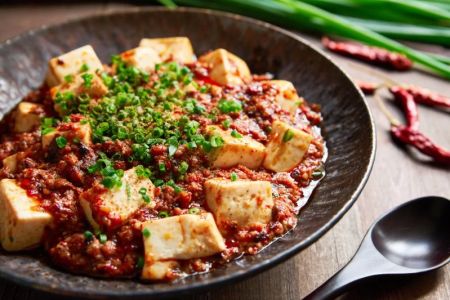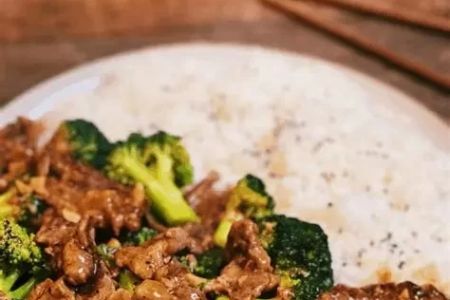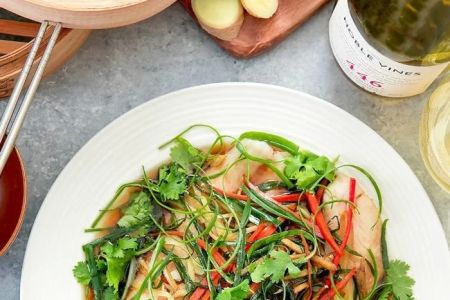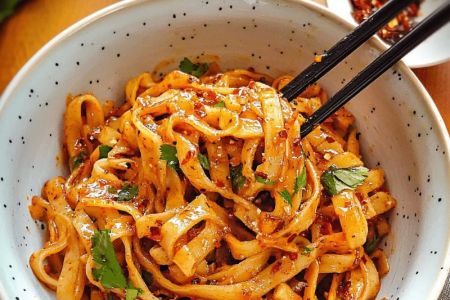- What Are Chinese Mushrooms?
- Shiitake Mushrooms
- Wood Ear Mushrooms
- Enoki Mushrooms
- Culinary Uses of Chinese Mushrooms
- How to Prepare Chinese Mushrooms
What Are Chinese Mushrooms?
Chinese mushrooms are a category of fungi commonly used in Chinese cuisine. These mushrooms are not only known for their distinct flavors and textures but also for their health benefits. Whether dried or fresh, Chinese mushrooms play a crucial role in soups, stir-fries, and hot pots, providing both savory umami and nutritional value.
The three most popular types of Chinese mushrooms are Shiitake, Wood Ear, and Enoki mushrooms. Each type has unique characteristics and plays an essential role in creating the depth of flavor in Chinese dishes. Let’s take a closer look at each one.
Shiitake Mushrooms
Shiitake mushrooms are perhaps the most well-known Chinese mushroom, both in China and worldwide. These mushrooms are native to East Asia and are widely cultivated in China, Japan, and Korea. Shiitake mushrooms have a meaty texture, making them perfect for savory dishes like stir-fries, soups, and broths.
Shiitakes have a rich, umami flavor that deepens when cooked, often described as earthy and slightly smoky. The cap of the Shiitake is brown with a slightly curled edge, and it typically ranges from 2 to 5 inches in diameter. While fresh Shiitakes are available, dried Shiitakes are commonly used in Chinese cooking, as they provide an even more intense flavor. Simply soak dried Shiitakes in warm water for about 20-30 minutes before cooking with them.
Common Culinary Uses of Shiitake Mushrooms:
- Stir-fries: Add Shiitake mushrooms to vegetable or meat stir-fries for an earthy flavor.
- Soups and broths: Shiitake mushrooms make an excellent addition to broths, enriching the overall taste with their deep umami flavor.
- Dim Sum: Often featured in dim sum dishes like mushroom buns and dumplings, Shiitakes are used to bring a rich and savory taste.
Wood Ear Mushrooms
Wood ear mushrooms, also known as black fungus, are commonly used in Chinese cuisine for their unique texture rather than their flavor. These mushrooms are thin, dark, and have a rubbery texture that becomes slightly crisp when cooked. They are often sold dried and are rehydrated before use in cooking.
Wood ear mushrooms are highly regarded for their ability to absorb flavors from sauces and broths. While they don’t have a strong taste of their own, their crunchy texture adds contrast to many dishes. In addition to their culinary uses, wood ear mushrooms are believed to have various health benefits, such as improving blood circulation and aiding digestion.
Common Culinary Uses of Wood Ear Mushrooms:
- Hot Pots: Wood ear mushrooms are commonly added to hot pots, where their texture adds variety to the dish.
- Stir-fries: These mushrooms work well in stir-fry dishes with vegetables, meat, and tofu, offering a satisfying crunch.
- Salads: Wood ear mushrooms are sometimes used in cold salads, particularly when combined with sesame oil, garlic, and soy sauce.
Enoki Mushrooms
Enoki mushrooms are another popular Chinese mushroom that stands out for its delicate, long, white stems and small caps. Often found in bundles, Enoki mushrooms have a mild, slightly sweet flavor and a crisp texture. These mushrooms are commonly used in Chinese, Japanese, and Korean cuisine, making them a versatile ingredient for various dishes.
Enoki mushrooms are often eaten raw in salads or soups, but they can also be stir-fried, grilled, or sautéed. When cooked, Enoki mushrooms retain their crunchy texture, making them an excellent addition to dishes that benefit from a delicate crunch. In Chinese cuisine, they are frequently used in soups, hot pots, and noodle dishes.
Common Culinary Uses of Enoki Mushrooms:
- Soups: Enoki mushrooms are a popular ingredient in soups and broths, where they add a gentle crunch and mild flavor.
- Hot Pots: Similar to wood ear mushrooms, Enoki mushrooms are often included in hot pot meals, enhancing the dish with their delicate texture.
- Stir-fries: Enoki mushrooms are perfect for quick stir-fries, where they can be combined with other vegetables and proteins.
Culinary Uses of Chinese Mushrooms
Chinese mushrooms are versatile ingredients that can be used in a wide range of dishes. Each type of mushroom—Shiitake, Wood Ear, and Enoki—adds its unique flavor and texture to Chinese cuisine. Here's how to make the most of these mushrooms in your cooking:
1. Soups and Broths
Chinese mushrooms are commonly used in soups and broths, where their flavors deepen over time. Shiitake mushrooms are often the base of a rich broth, while Wood Ear mushrooms add texture, and Enoki mushrooms provide a delicate crunch. Combine all three for a robust and complex soup that is both flavorful and satisfying.
2. Stir-fries
Stir-frying is another popular method for cooking Chinese mushrooms. In a stir-fry, mushrooms are typically sautéed with vegetables, meats, and seasonings, absorbing the flavors of the sauce while maintaining their unique textures. Shiitakes lend an earthy depth, Wood Ear mushrooms offer crunch, and Enoki mushrooms contribute a mild sweetness.
3. Dumplings and Dim Sum
Chinese mushrooms are commonly used as a filling for dumplings and dim sum. Shiitake mushrooms, in particular, are ideal for these dishes, adding a savory umami flavor. Wood Ear mushrooms provide additional texture, while Enoki mushrooms offer a subtle sweetness that balances the other ingredients.
How to Prepare Chinese Mushrooms
Preparing Chinese mushrooms is simple, but there are a few important steps to follow to ensure the best flavor and texture. Here's a guide to preparing Shiitake, Wood Ear, and Enoki mushrooms:
1. Shiitake Mushrooms
If using dried Shiitake mushrooms, rehydrate them by soaking them in warm water for 20-30 minutes. Once softened, discard the stems, as they can be tough. The caps are ready to be sliced and added to your dishes.
2. Wood Ear Mushrooms
Wood ear mushrooms come dried and must be soaked in warm water for about 15-20 minutes. After soaking, cut off the hard stems and use the rehydrated mushrooms in your dishes.
3. Enoki Mushrooms
Enoki mushrooms are typically sold fresh in bundles. Gently separate the stems and discard any tough roots. Enoki mushrooms are ready to be used raw or cooked, and they don't require any soaking.
Chinese mushrooms are an essential part of Chinese cuisine, offering a wide range of flavors, textures, and culinary possibilities. Whether you're making a rich soup, a quick stir-fry, or authentic dim sum, Shiitake, Wood Ear, and Enoki mushrooms can enhance your dishes with their unique qualities. If you're looking for high-quality mushrooms for your recipes, be sure to visit Chinese Food for the best ingredients to bring authentic flavors to your kitchen.







